
Coastal Nomads - Suzi, John & Betty
vakantio.de/coastal-nomads-suzi-john
The Basque Country - Surfing, History, Art, cryptic language, and a small heist
Birt: 16.09.2024




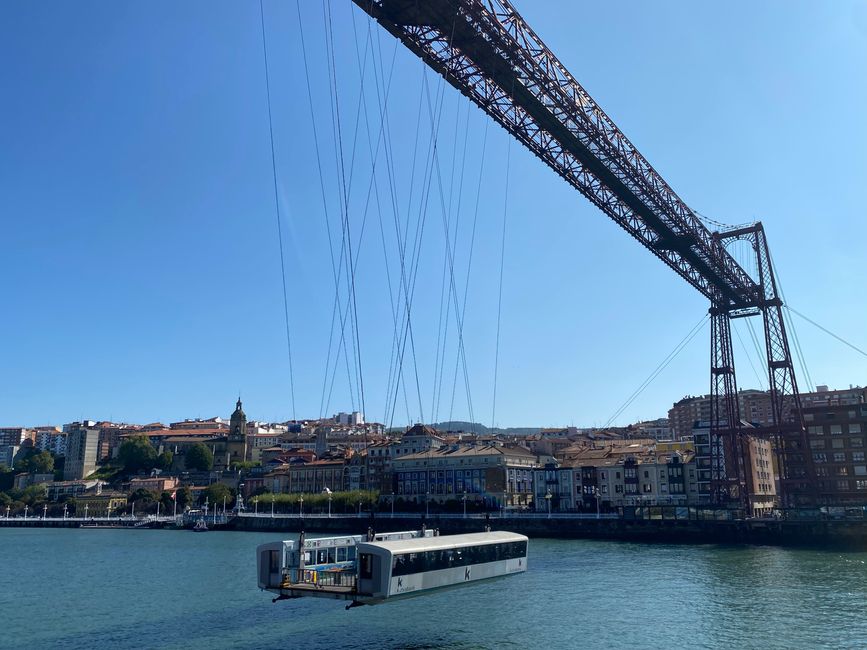

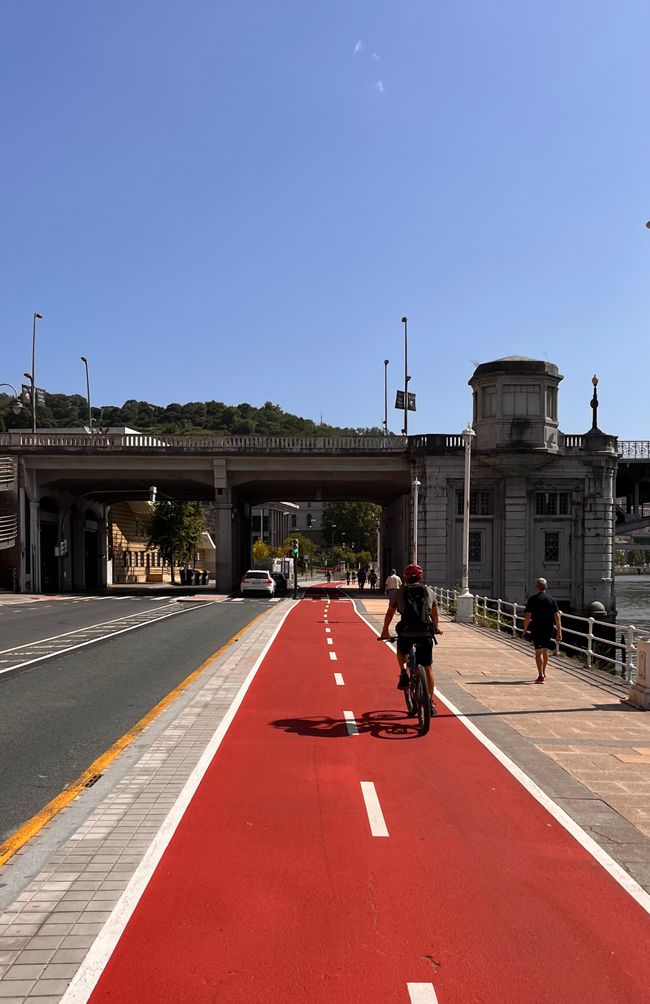
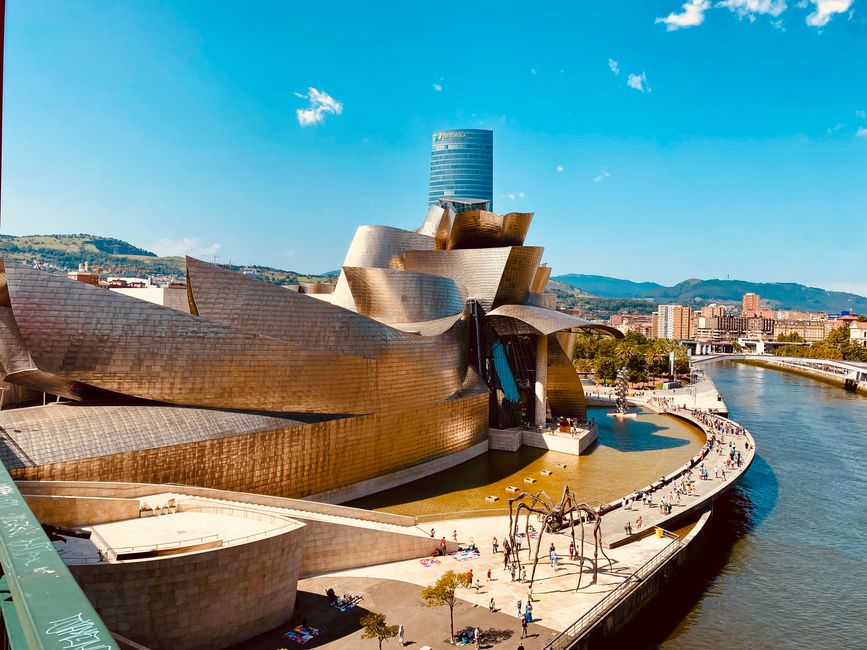
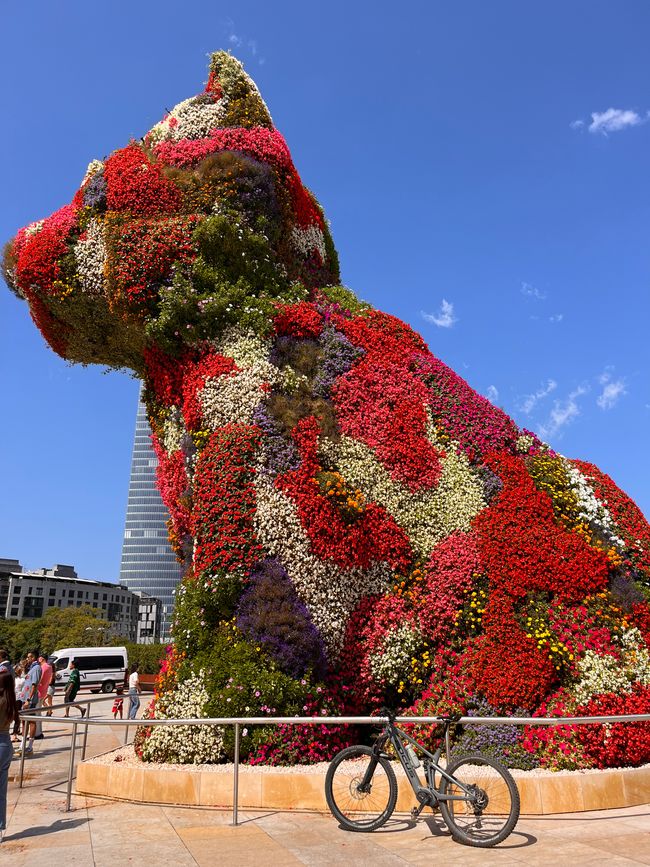






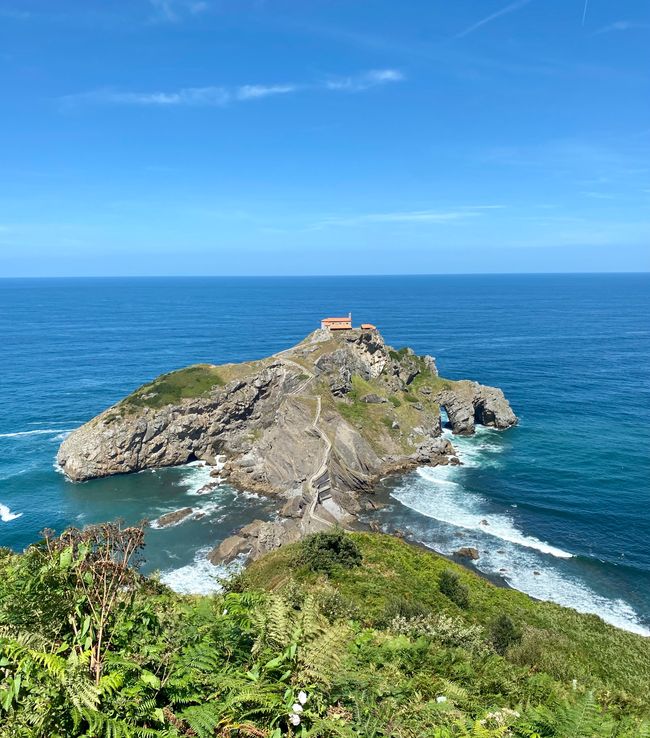

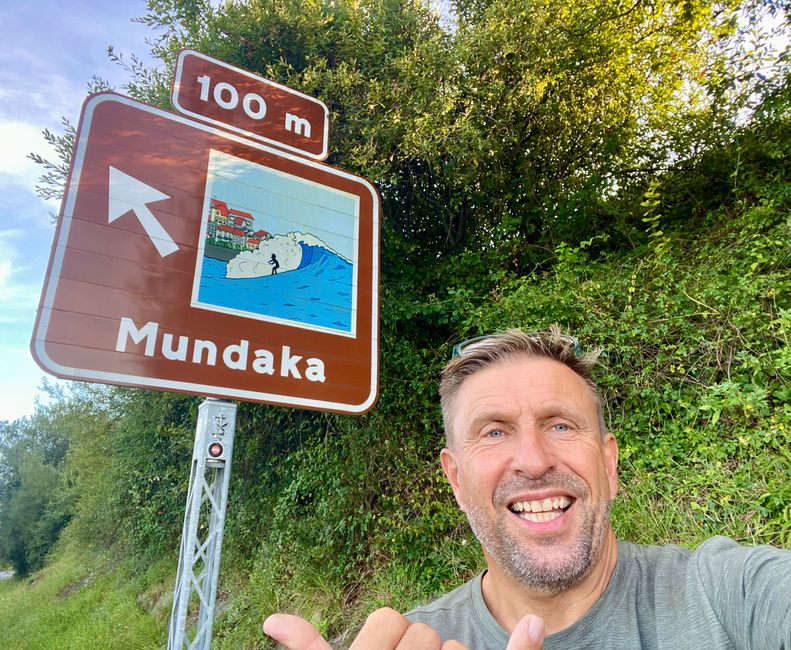


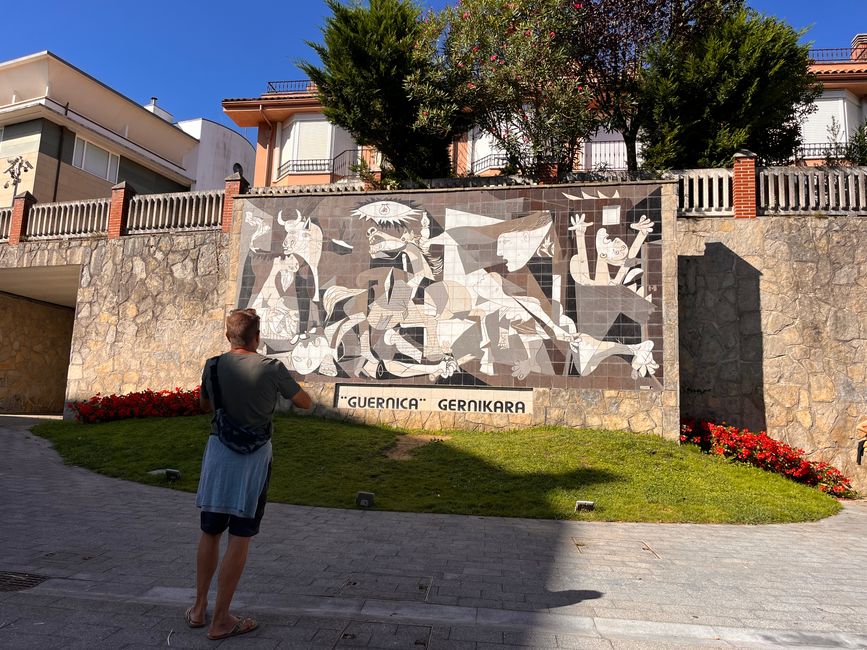







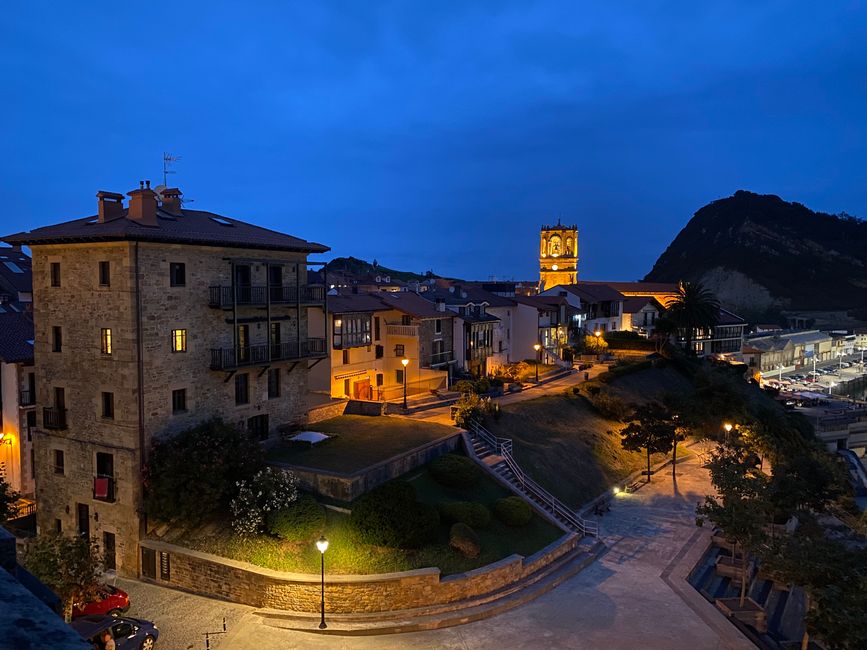




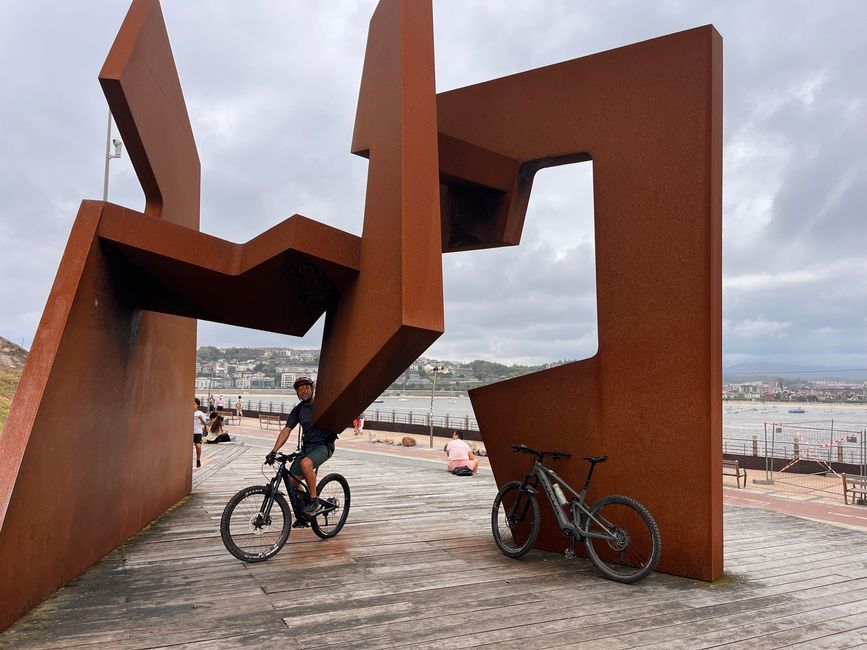

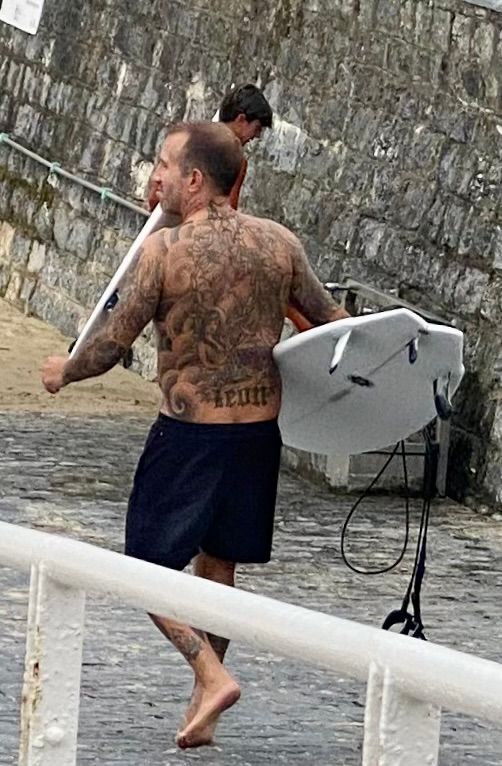



Gerast áskrifandi að fréttabréfi
Personal log entry from the houseboat Betty HH-VX 717: We are writing the year 2024, August 23, 11:40 AM.
It is again time to set off for new shores. East of the lesser-known regions of Asturias and Cantabria lies the (Spanish) Basque Country, which alongside Galicia is commonly perceived as 'Northern Spain.' The Basque Country (in Basque 'Euskadi') has about 2.2 million inhabitants and is roughly half the size of our comparison scale Schleswig-Holstein. The Basque Country has a tumultuous history behind it, with keywords like independence and ETA. Along the way, we notice many (Basque) flags, political graffiti, and slogans on houses and walls. The Basque Country also has its own language, which is unique in the world and completely incomprehensible to outsiders. Place names like Otxarkoaga make navigation no easier. The capital of the Basque Country is Bilbao. Bilbao lies just behind the border with Cantabria and is also our first destination.
In the morning, we try to find a parking space at one of the many Basque beaches near Bilbao after departing from Santona (see blog Cantabria), but everything is sooooo tight and parked up that we are almost ready to despair. We spend lunchtime at a lonely hiking parking lot with a fantastic view over the Atlantic, but with no way to get to the water (except in free fall). We then continue on the coastal highway towards Bilbao. Bilbao is regarded on the internet as a tough spot for motorhomes. To simplify: either parking and overnighting are forbidden or your car gets rummaged through... However, we have experienced several times on our journey that the internet and reality on the ground can be quite different. As we do not want to test our luck directly in the city, we cross the Rio de Nervion, leave Bilbao behind on our right, and gingerly make our way through the suburbs towards the coast, which is about 15 km from the city center. Relatively randomly, we come across a top attraction in Areeta, a fashionable beach resort at the gates of Bilbao, the Puente de Viscaya. The Biscay Bridge is a transporter bridge across the Rio de Nervion for pedestrians and vehicles, opened in 1893, making it the oldest transporter bridge in the world (and a UNESCO World Heritage Site). We park comfortably nearby after police officers politely pointed out during a traffic check (we were innocent) that parking at a blue-marked space at this hour costs nothing. In the evening sun, the reddish-brown bridge in 'Eiffel Tower' style looks particularly picturesque. After some searching, we then find a parking space high on the cliffs at the mouth of the Rio de Bilbao (same river, just different names) behind the coastal town of Getxo. Here we also find some other (local) campers; the atmosphere is relaxed and laid-back, and everyone enjoys the dreamy sunset over the Atlantic together.
The next morning, we drive Betty a few kilometers closer to the city center, park for free at the quayside of Getxo, and ride our bikes into Bilbao. For over 10 km, we travel mostly on a bike path that follows the river. Wonderful old town and new construction areas like Hafencity alternate with desolate industrial wastelands. Upon arriving in Bilbao, you are welcomed by THE landmark of Bilbao, the Guggenheim Museum by the river! The building, designed by Frank O. Gehry in the so-called deconstructivist style in 1997, is clad in 42,000 titanium plates and is an absolute eye-catcher both outside (and inside)! We particularly enjoy the pop art exhibition in the museum featuring works by, among others, Andy Warhol, Jeff Koons, and Roy Lichtenstein. Also incredibly impressive is the walk-in installation consisting of 7 monumental steel sculptures by Serra, which at that time cost 20 million € and was probably the heaviest commission ever developed for a museum at over 1,000 tons in weight. Overall, an absolute highlight of our journey and a must-see for anyone visiting Northern Spain! It is also noteworthy that the museum, inaugurated in 1997, has revived an entire city with around 1 million visitors annually after the decline of heavy and shipbuilding industries in the 70s and 80s. By the way, the so-called 'Bilbao effect' describes the impact such projects can have on cities and regions.
The next day, classic sightseeing in Bilbao is on the agenda. We take the suburban train into the city center and let ourselves drift. Coincidentally, it is the big Fiesta week, the Aste Nagusia, and life is buzzing in the streets. Almost all visitors (except us) wear a blue-and-white neckerchief. In the narrow alleys, music is played, singing is heard, and there's a lot of drinking. Unfortunately, the weather is Atlantic and changeable, and slowly clouds with wind and drizzle are moving in from the sea into the city. We retreat to the historic market hall (Erriberako Merkatua), where you can enjoy the tapas of the Basque Country, known here as Pintxos, for relatively little money. Very delicious, especially with a small Cerveza. The Cerveza, of course, needs to go somewhere eventually, and we both visit the restroom of the market hall. As I enter the restroom, I am alone, except for a man at the sink. He turns around, firmly pulls the sliding door to the outside closed, faces me, and aggressively attacks me. A single glance is enough to realize that he is an aggressive junkie who apparently wants money or valuables from me. Instinctively, I seem to act correctly (as I later read online). I raise my hands, palms out, take up a stable position, and fend him off while simultaneously shouting 'Policia, Policia.' After a few moments, he lets go of me, and I can quickly escape from the restroom. What an (unexpected) scare and by far the most negative experience so far on our journey in terms of safety. We continue to stroll through the old town of Bilbao, but in the drizzle and after this incident, no sightseeing feeling sets in anymore. We are happy to be back at our pitch by the coast in the company of other friendly campers early in the evening. Nevertheless, it must be emphasized that Bilbao is definitely worth a trip, and this stupid incident could have happened in any other major city!
Alright, out of the 'big city' and into nature. At least along the coast of the Basque Country, it's not that easy. We try to find a parking space by the water in Bakio, east of Bilbao, but no chance (it is, of course, high season), not even in the vicinity! Too bad, because there's a nice wave running at Bakio Beach. The Park-4-Night app points us to an 'emergency spot', which is a parking lot on the roadside at a Mirador overlooking the Atlantic. Upon arrival, we get almost the last spot, while just a few meters away, cars, buses, and especially motorcycles thunder by. But the view from the Mirador is amazing, and at night there is almost no vehicle traffic, as we discover in the morning after a quiet night. Not far from the Mirador is the chapel of San Juan de Gaztelugatxe, located on a peninsula. A winding staircase leads from the mainland along a narrow path to the peninsula with the chapel. The entire area is so picturesque, mystical, and photogenic that the peninsula was a filming location for the hit series 'Game of Thrones'! Due to the enormous tourist rush, access is limited, and with a stroke of luck, we got the last two (free) access tickets for today the night before. Normally, tickets are booked out for weeks in high season. The Spaniards, by the way, do not charge for access, as is the case for many attractions in the country. In the USA, admission would surely cost a minimum of $50...
After visiting San Juan de Gaztelugatxe, we head to Mundaka. Mundaka is known worldwide among surfers for its hollow-breaking waves ('Barrels') that break at the mouth of the river Mundakako (of course in the winter half of the year). The place is so tight that we have no chance of parking with our 7.20 m Betty. We quickly head to the nearby Bermeo, saddle our bikes, and explore Mundaka. Although it is a world-class surf spot, there is surprisingly little surfer vibe in the town (only a lonely surf shop), and as mentioned, practically no parking spaces. Outside, only a microwave is running, occupied by a few surfers, but the potential of the spot is evident. Back in Bermeo, we get a giant pizza to go and enjoy it in the van, which we have parked inconspicuously for the night in a residential area.
Inland, just a few kilometers from Bermeo and Mundaka, lies Gernika, more commonly known in Germany by its Castilian spelling, Guernica. Early in the morning, we head to the still-sleepy town. Gernika is a place that has been regarded for centuries as the holy city of the Basques. For this reason, on April 26, 1937, during the Spanish Civil War, unofficial Italian and German air force units ('Legion Condor') bombed Gernika in a devastating attack to support General Franco. During the hours-long attacks on the defenseless town, several hundred people lost their lives, and the city was almost completely destroyed. Pablo Picasso captured the horror of this attack in his world-famous painting 'Guernica' in 1938. We visit the town, see various memorials, and visit the incredibly intensely designed peace museum, which seeks to explore the attack and show paths to peace. Unfortunately, such museums are not visited by those who actually need it... By the way, only in 1997 did the German President Roman Herzog apologize for Germany's involvement in the attack. Deeply touched, we leave Gernika.
We spend the next night at a wood storage site - which we accidentally discover while passing by - on a small country road with a perfect view of the Atlantic. Swimming is even possible if you take a rudimentary forest road down to the water. The next day, we spend time in the coastal town of Ondarroa, where we find with great difficulty a semi-official, shady, and damp parking space under trees next to the campsite. We do not want to stay overnight here, but the town is worth seeing and has a great beach. In the inner harbor, a blue-red painted wooden pole about 10 m long juts diagonally over the water. The winner is whoever can walk the longest on the wooden pole over the water before falling in. We couldn't find out whether this is a popular sport here and whether the pole is also greased. Here at the harbor, we also see the Basque flag flutter for the first time, which, except for the colors, closely resembles the United Kingdom's flag. Early in the evening, we continue to Getaria. There we get a spot at the official motorhome parking lot of the town. Although it is loud, it is in an ideal beach location. There are still nice waves in the bay, which I take advantage of for a small surfing session. The fishing village of Getaria, located between two beaches, is considered one of the prettiest villages in the Basque Country, which we can only confirm after an evening walk through the old town. The morning walk to the lighthouse falls victim to the drizzling rain; the weather on the Atlantic is indeed unpredictable. In the rain, we drive through the seaside resort of Zarautz, which is also well-known among surfers. Here again, parking is a disaster, and the camping spot by the coastal highway in the industrial area is a disgrace. We continue in the direction of San Sebastian.
San Sebastian is the last major city before the French border and resembles cities like Biarritz or Nice in ambiance. Tactically, we head to the official motorhome parking lot in the morning and during light rain. Both factors ensure that we easily find a parking space that is also cheaper than a paid parking space in the city area. We take the bus for the short trip into the city. During the ride, an older, neatly dressed lady tenderly takes care of us and insists on where we should get off. We actually wanted to go a little further but are 'forced' to get off at the luxury shopping street. Well, we take a quick look and then head to the surfers' bay Zurriolako Hondartza (yes, that's really its name in Basque). We like San Sebastian a lot. The city has beautiful Art Nouveau buildings, a kilometer-long beach promenade, and two huge swimming bays separated by a hilly green peninsula on which the Castillo De La Mota stands. At the left end of the bay stand the three steel sculptures 'Comb of the Wind' by the artist Eduardo Chillida. We want to take selfies, but a nice older gentleman - evidently a regular here - takes over the photographing and tells us exactly where we should optimally position ourselves. At another installation, air is pushed through underground tunnels, which shoot out of holes in the promenade whistling and with a lot of pressure when the waves are rolling in. A huge amount of fun, especially for the many children.
The next day, we saddle our bikes and want to explore San Sebastian and its surroundings. The city is very bike-friendly; as is often the case in Spain, there are separate bike lanes. At the surfer café 'The Simpson's', we recharge our energy before we intend to set off for the surrounding hills. However, this proves difficult. We can find no route on the western hill Monte Ulia that is passable from the city by bike. After we have worked our way up some heights on the eastern hill Monte Igueldo, we come upon a barrier with a toll booth. The hill is private property, and entry costs money, regardless of whether you arrive by car or bike. We graciously decline! Still, it was a great tour during which we gained a nice overview of this very liveable city. In the evening, we treat ourselves to a hot shower. Below the beach promenade, there are well-maintained sanitary facilities with a fully staffed supervision (everything is free; when tipping, the staff gets quite embarrassed) and hot showers, for which you pay €1.60. A great service!
After 6 weeks on August 31, our journey along the northern Spanish coast comes to an end. We set off from San Sebastian and absolutely want to check off the final kilometers of Spanish coast up to the French border. At Irun, we cross the border. We’ve been here once before, in 1984 as a stopover during our Interrail tour to Morocco. The next city in France is Hendaye. For a border town, it makes quite a good impression. With a bit of luck, we find a top parking spot directly on the beach promenade, just a few meters from the water. The sun is shining, the water is warm, and there are waves for surfing too. A beautiful ending! After spending many, many months almost exclusively on the Atlantic, we now turn towards the Pyrenees and the Mediterranean and finally Morocco. A new chapter of our journey begins!
Conclusion Basque Country: An impressive mix of stunning landscapes, proud inhabitants, thrilling history, remarkable cities, and a destination for surfers. However, during high summer, it is very crowded and there is difficult access to the beaches.
On the road: 222 days
Total distance covered: 12,070 km
TO BE CONTINUED
Gerast áskrifandi að fréttabréfi
Svaraðu (5)
Andreas
Das ist wieder ein toller Reisebericht, macht echt Spaß zu lesen.
Habt weiterhin eine tolle Tour.
Viele Grüße 🙋♂️Sascha
Schöne Schilderungen, weiterhin gute Fahrt! 🤙🏻 …und hoffentlich keine unliebsamen WC-Erlebnisse mehr 😬Zhaoyang
Impressive and enjoyable, waiting for next chapter 😊
Patrick und Jeanett und Boomer
Ihr Lieben, wieder ein eindrucksvoller und seh abenteuerlicher Reisebericht.
Passt auf euch auf!wir lieben euch 🥳🥳🥳John & Suzi
Danke für euer Lob, immer wieder motivierend, wenn einem beim Blogschreiben die Puste ausgeht!
Ferðaskýrslur Spánn
